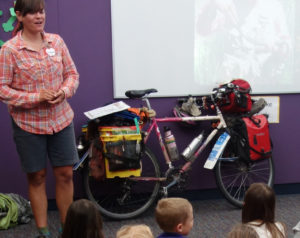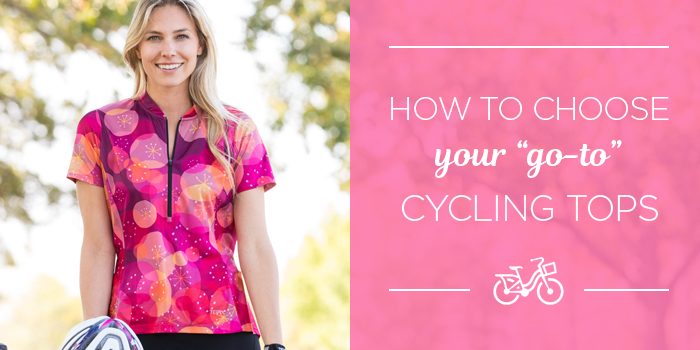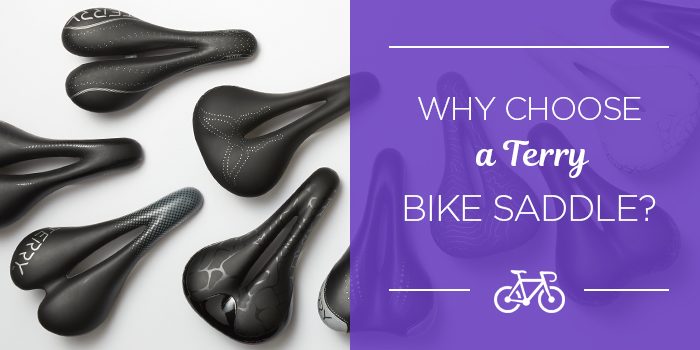What touring bike would you choose if you knew you were going to spend most of a year on a tour of over 10,000 miles?
Asked to picture the perfect touring bike, most cyclists would imagine some variation of a sleek, wide-geared machine with plenty of braze-ons for fenders, lights and racks, beautiful, immaculate paint, glistening chrome and satin alloy details. Georgena Terry’s beautiful custom bicycles come to mind.
Terry friend Sara Dykman, who shared her amazing adventure of following the monarch butterfly migration by bike, has other ideas.
Her custom assembled bike – the “butterbike” – has proven itself over tens of thousands of miles of every kind of terrain, but her long distance hauler doesn’t look anything like a state of the art touring bike. As it turns out, that’s the point…
After seeing the photos from her butterfly adventure, we had to ask Sara about the bike she rode to complete her epic journey:
Terry Bikes – Your bike seems to be, let’s say… well broken in! Can you tell me something of its history, what kind of other rides you have done on it?
Sara Dykman – Broken in is such a nice way of putting it! In 2012 I decided to do a bike tour starting in Bolivia and I wanted a solid bike, with 26 inch wheels (often the most easy to work with in other countries) that wouldn’t attract attention. I built the bike with a friend in California. It cost $150 in parts (some things I couldn’t find used) and another $150 in donation to the bike church that had all the equipment. Lo and behold, the bike made it thousands of miles, including a 10,000 mile trip from Bolivia to Texas. It has also gotten to canoe down the Missouri River! On my source-to-sea trip down the river, we brought bikes to help portage dams, get groceries, and visit schools.
 T.B. – I see some interesting customizations – the front fender in particular – what’s the story behind that?
T.B. – I see some interesting customizations – the front fender in particular – what’s the story behind that?
S.D. – I love reusing things. The fenders are made from old campaign signs. They do the job, are easy to install and “adjust,” and they add that broken in quality that is important to me. The less valuable my bike looks, the less I have to worry about it getting stolen.
T.B. – I’m guessing the handle bar arrangement is not original either? How did you decide on the right configuration?
S.D. – For long tours the most important thing is comfort. I first had cruiser bars to keep my posture more upright, which is the most comfortable for me if I’m going to be biking very slowly all day long. The crazy bars were to give me some fun hand positions, which I really only use when I am going downhill.
T.B. – The plastic tub panniers look very practical – how did you make and fit those, and did they work well?
S.D. – The plastic tubs are old kitty litter containers. All you have to do is add some hooks and you are good to go. I added outside pockets because I like to carry way too much stuff. They are waterproof, good chairs, again look janky enough to be protective, AND you can do your laundry in them.
T.B. – I see you have a Terry saddle on your bike, a Liberator X Gel. How did you choose that, and how has it worked out for you?
S.D. – I am sorry to say I chose the seat because it was the one at the bike shop, so it was just a happy accident. But it’s supported me on my tours for months on end – I like having a hole in it.
T.B. – Did you have any breakages or equipment disasters?
S.D. – I destroyed a rear wheel when a bungie got caught in a spoke. Luckily I was only six miles from a bike shop at the time, and was able to “skateboard” (standing with one foot on a pedal and the other pushing off like a skateboard) to the bike shop. The cassette and spokes were destroyed. Be careful with bungees!
T.B. – Do you have any advice for someone going on a similar trip?
S.D. – I think the most important part is starting. Once you are on the road the details will work themselves out. If you can start and take one mile at a time, you can go a long way.
T.B. – Did you do any training or other special preparation to get ready?
S.D. – I don’t train. I start at a pace and a distance that works and get stronger as I go. I did spend about a year preparing my route. I gave presentations and thus needed to do a lot of outreach prior and during my trip.
T.B. – About how many miles/hours did you ride in a day?
S.D. – I think I go about 10mph on average. I spent about 10 days in Mexico on steep, dirt roads early in my trip. I think my average was closer to 6 mph. It was worth it for the feeling of adventure. My goal most days was to get about 60 miles.
T.B. – Was it a solo trip, and did you take any precautions for safety?
S.D. – I was solo. I found that it felt just about as safe as when I travel in small groups. As a woman, I think people are worried for you, so you are gifted a lot of exceptional hospitality. I also think that I am good at reading people and thus can avoid sketchy situations (mostly!).
Distracted drivers are probably a cyclist’s biggest threat, and all you can do for that is stay visible, alert, and be ready to use your voice like a car horn.
T.B. – Any more bike adventures on the horizon?
S.D. – I’m working on a book about my tour following the monarch migration. It is going to be published in the spring of 2021. I hope to do a butterfly bike book tour (say that three times fast) at that point. Otherwise I’m ready for another canoe trip!
T.B. – Thank you Sara – congratulations on your remarkable rides, and best of luck with the book project!

Read about Sara’s Monarch Migration bike tour, and check out her blog, videos and other adventures here.




Leave a Reply